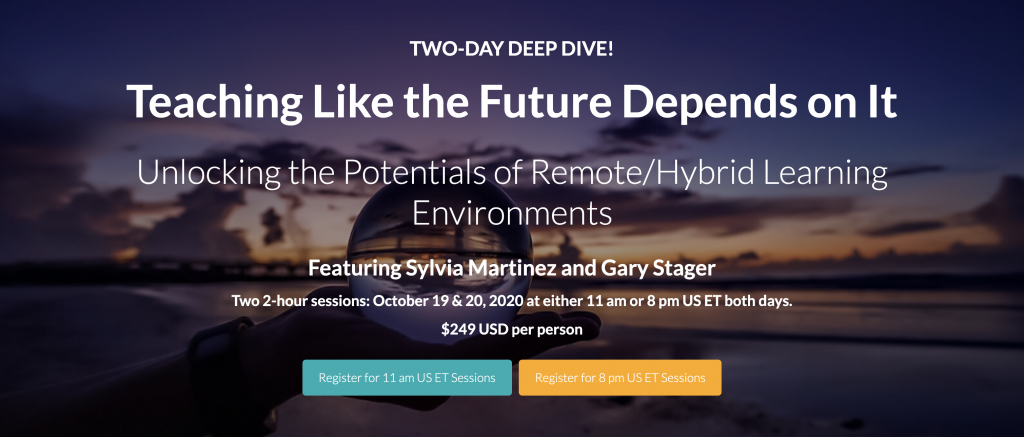
This hybrid teaching stuff sure is a lot of work. How would you suggest reducing teacher workload and stress?
Good teaching is not about what the teacher delivers to the students, but creating the conditions for deep and rich student experiences. When students work on meaningful projects and make their project development visible to peers, classmates can provide ongoing feedback throughout the learning process, not just on ta-da day at the end of a unit. If assessment is viewed as a way of benefiting learners, then student collaboration and natural feedback is best, regardless of the environment. In a hybrid environment, there are interesting opportunities to incorporate digital creative technologies, design, and programming in new ways, taking advantage of the affordances of being online and remote.
What’s the best technology for hybrid teaching?
When it comes to software, only two functions are critical – the ability to engage in conversation via threaded discussions (asynchronously) and a way to chat in real time. While it is easy to be distracted by a cornucopia of commercial software packages, educators would be well-advised to embrace text (not texting) as an incredibly rich vehicle for learning.
Here are but a few benefits of text:
- Text requires very little bandwidth and therefore is more reliable than video and even audio.
- Text is writing with opportunities for being deliberate and reflective. Editing clarifies what you are trying to communicate and improves writing skills.
- Communication via text contains less noise and chatter than synchronous audio or video.
- Text communication requires reading. Reading is good.
If some of our students are in class and others online, is there a better approach than “Room & Zoom?”
The term, Room and Zoom, is being used to describe a teacher teaching some students face-to-face while others watch remotely. This approach is not only be rough on teachers, but is awful for kids at home.
A bit of flexibility is required, but it seems that the best way to address such a “hybrid” model is by deploying faculty more cleverly. Assigning a teacher to teach the remote students, even if the class is multi-age, allows that professional to deploy the best practices of synchronous and asynchronous teaching while other teachers engage with children in the same physical space.
Once everything returns back to normal, the students taught remotely can either stay together as a class or be reintroduced into the school community. Kids are pretty resilient and the benefits of being taught well online outweigh any stress associated with going back to school, whenever that occurs.
For answers to these questions and more, Sylvia Martinez and Gary Stager will be leading a two-day online workshop, Teaching Like the Future Depends on It, on October 19-20, 2020. Click here for more information and to reserve your spot.
Veteran educator Gary Stager, Ph.D. is the author of Twenty Things to Do with a Computer – Forward 50, co-author of Invent To Learn — Making, Tinkering, and Engineering in the Classroom, publisher at Constructing Modern Knowledge Press, and the founder of the Constructing Modern Knowledge summer institute. He led professional development in the world’s first 1:1 laptop schools thirty years ago and designed one of the oldest online graduate school programs. Gary is also the curator of The Seymour Papert archives at DailyPapert.com. Learn more about Gary here.
